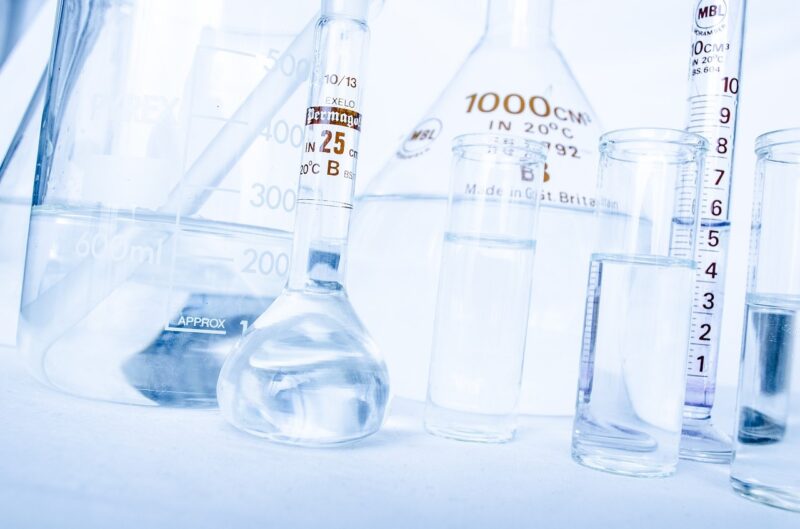
Acids and bases are fundamental concepts in chemistry, influencing various fields, from biology to environmental science and industrial applications. Understanding these substances and their interactions is crucial not only for academics but also for managing everyday tasks like cooking, cleaning, and regulating bodily functions.
1. Defining Acids and Bases
To elucidate the properties of acids and bases, we’ll begin with their definitions.
– **Acids:** Acids are substances that donate protons (H+ ions) when dissolved in water. This results in a higher concentration of hydrogen ions in the solution. Common examples include:
– Hydrochloric acid (HCl)
– Sulfuric acid (H₂SO₄)
– Acetic acid (CH₃COOH)
– **Bases:** In contrast, bases are substances that accept protons or generate hydroxide ions (OH-) in aqueous solutions, leading to a decrease in hydrogen ion concentration. Common examples include:
– Sodium hydroxide (NaOH)
– Potassium hydroxide (KOH)
– Ammonia (NH₃)
The strength of acids and bases is commonly measured using the pH scale, which ranges from 0 (strongly acidic) to 14 (strongly basic), with 7 being neutral.
2. Properties of Acids and Bases
Acids and bases exhibit distinct characteristics that can be observed through physical and chemical properties:
– **Physical Properties:**
– **Acids:** Typically have a sour taste (e.g., citrus fruits), are corrosive, and change blue litmus paper red.
– **Bases:** Generally have a bitter taste, feel slippery or soapy to the touch, and change red litmus paper blue.
– **Chemical Properties:**
– **Acids:** React with metals to produce hydrogen gas (H₂) and can corrode metals. They also neutralize bases, forming water and salts.
– **Bases:** Can react with acids in a neutralization reaction, and are often used in cleaning products due to their ability to neutralize acidic stains.
Understanding these properties helps in applications ranging from laboratory reactions to daily life scenarios such as cooking and cleaning.
3. How Acids and Bases React
Acids and bases react through a process called neutralization. This reaction typically produces a salt and water and can be represented in the general formula:
**Acid + Base → Salt + Water**
### Example of Neutralization:
For example, when hydrochloric acid reacts with sodium hydroxide, the following occurs:
**HCl (aq) + NaOH (aq) → NaCl (s) + H₂O (l)**
This means that hydrochloric acid combines with sodium hydroxide to form sodium chloride (table salt) and water, a fundamental reaction that highlights their interplay.
### Why Neutralization Matters:
Neutralization reactions have significant environmental, industrial, and biological implications. They are vital in:
– **Biology:** Maintaining pH balance in living organisms. For instance, the human stomach produces hydrochloric acid for digestion, while bases are necessary for neutralizing stomach acid when it becomes too acidic.
– **Industry:** Manufacturing products such as fertilizers, where acid-base reactions help control pH levels for optimal soil health.
– **Environmental Science:** Treating acid rain effects by restoring ecological balance in impacted areas.
4. The Role of Indicators in Acid-Base Chemistry
Indicators are substances that change color in response to the pH level of a solution, helping to identify whether a solution is acidic or basic. Common indicators include:
– **Litmus:** Changes from red in acidic solutions to blue in basic solutions.
– **Phenolphthalein:** Colorless in acidic solutions and pink in basic solutions.
– **Bromothymol Blue:** Yellow in acidic solutions and blue in basic solutions.
Using indicators is crucial in both laboratory settings and everyday life, as they offer a simple way to gauge acidity or basicity without complex equipment.
5. Applications of Acids and Bases
The knowledge of acids and bases transcends academia; their applications are extensive across multiple domains:
– **Healthcare:** Understanding the role of acid-base balance in blood and bodily fluids is essential for medical practices.
– **Food and Beverage:** Acids like citric and acetic acid are widely used as preservatives and flavor enhancers in the food industry.
– **Cleaning Products:** Many effective cleaning agents are basic substances, which help dissolve grease and neutralize odors.
### Industrial Applications:
In industry, acids and bases are involved in:
– **Manufacturing:** The production of plastics, dyes, and other chemical goods relies on the foundational reactions of acids and bases.
– **Agriculture:** Acids and bases control soil pH, crucial for maximizing crop yields and ensuring healthy plant growth.
Each of these applications highlights the pervasive role and significance of acids and bases in different industry sectors and everyday life.
Conclusion
Acids and bases are foundational elements in the world of chemistry, deeply embedded in various facets of life, industry, and the natural environment. Their interactions through neutralization reactions not only produce vital products but also underscore their importance in sustaining biological functions and industrial processes. Understanding these concepts is paramount for anyone looking to grasp foundational chemistry concepts, whether in a classroom, laboratory, or in everyday scenarios.
By educating yourself on the properties, reactions, and applications of acids and bases, you can better appreciate their significance in both practical and theoretical contexts.







